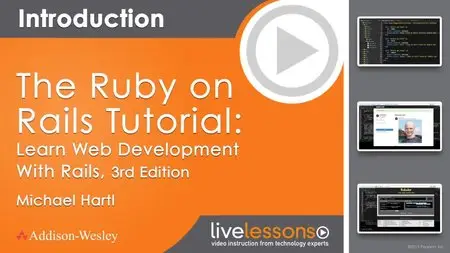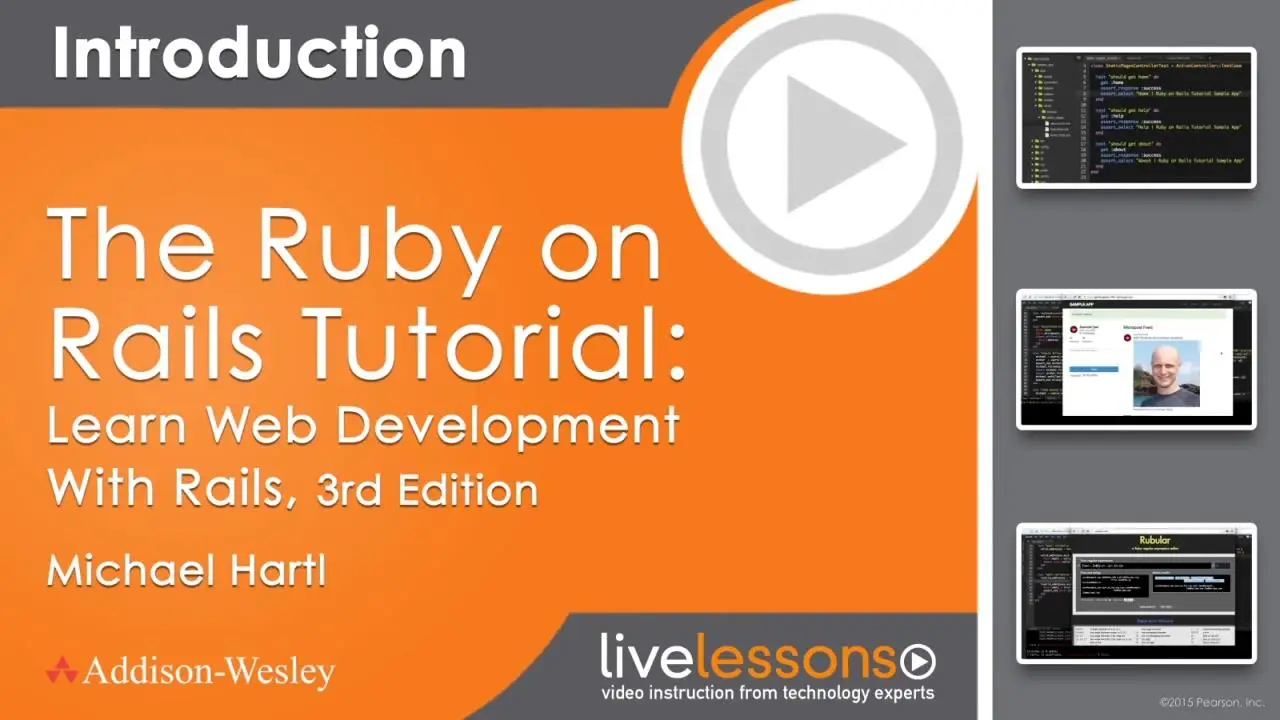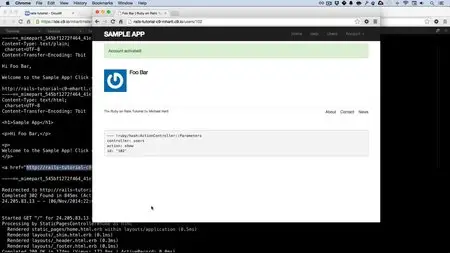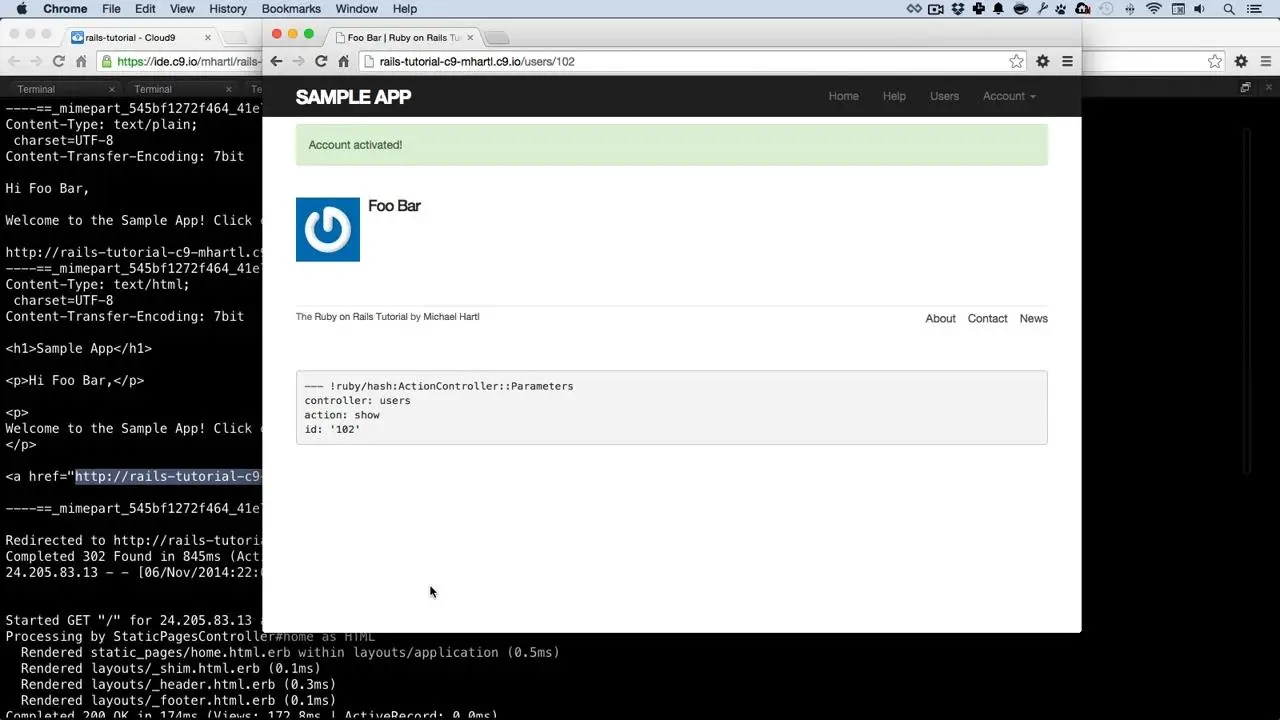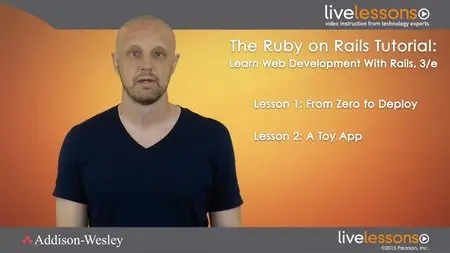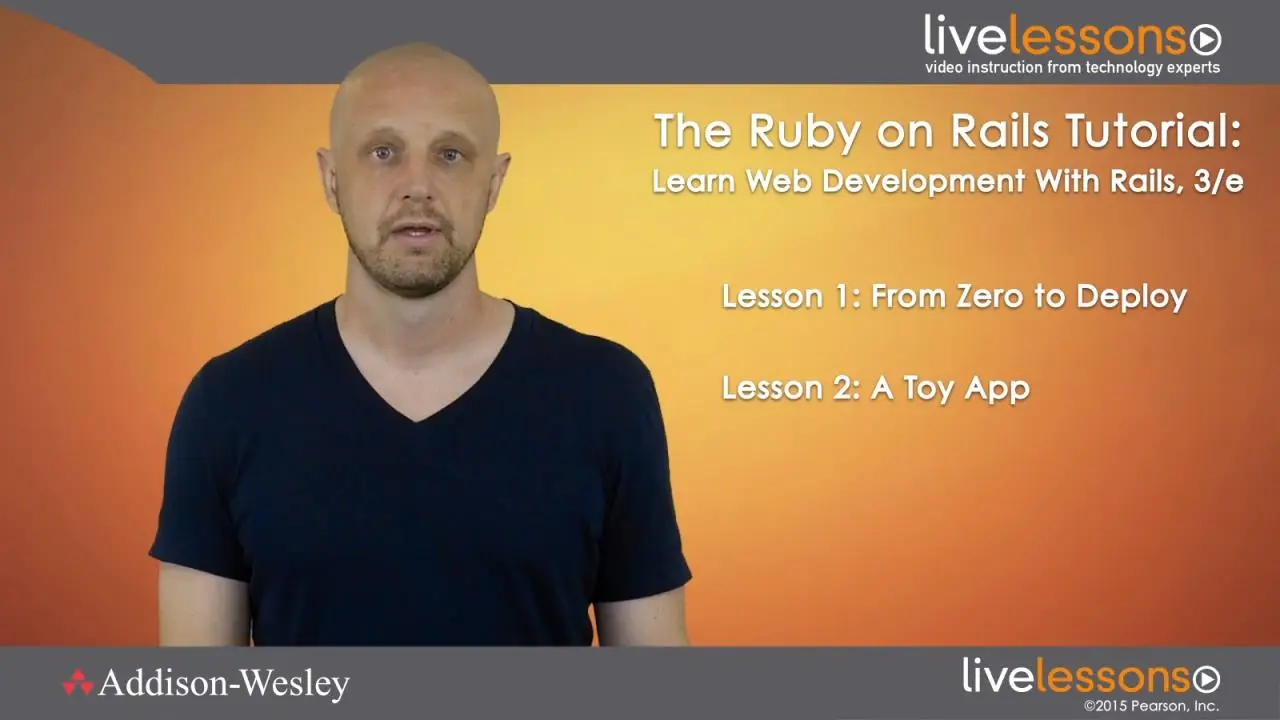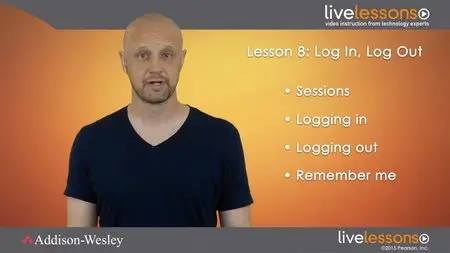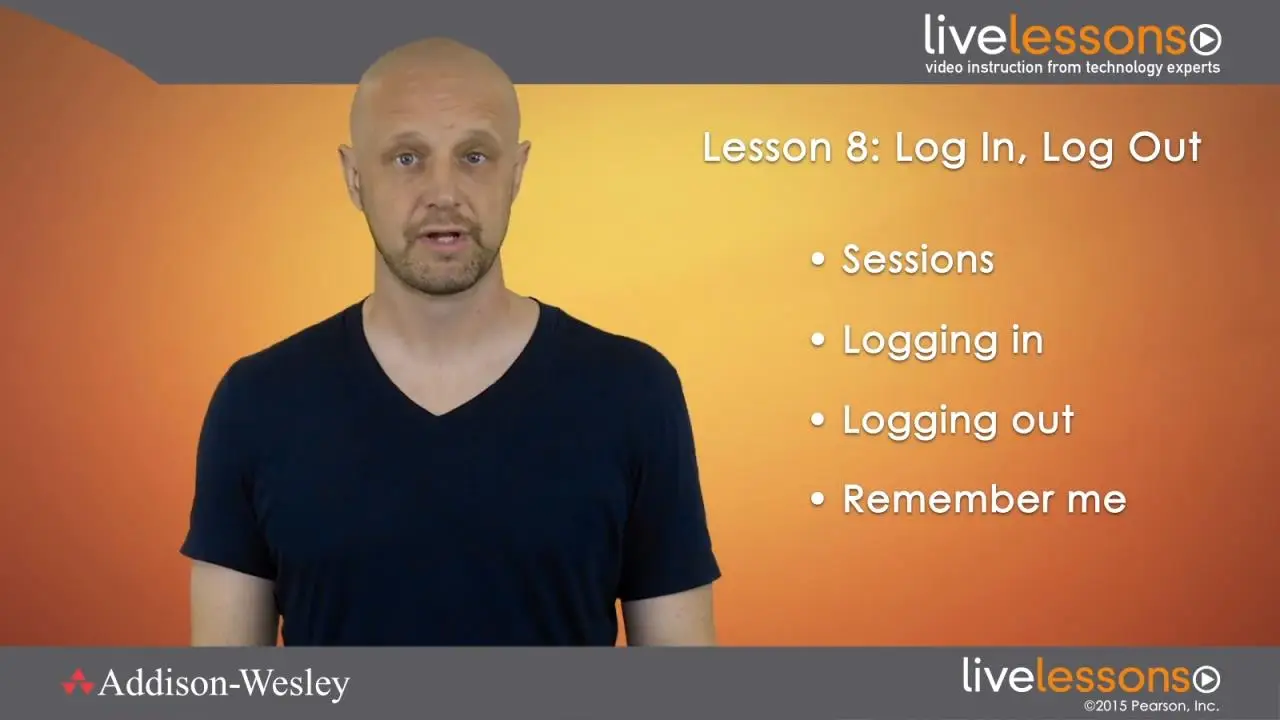LiveLessons - The Ruby on Rails Tutorial: Learn Web Development With Rails, 3rd Edition
English | Mar 26, 2015 | ISBN: 0134097335 | mp4 | H264 1280x720 | AAC 2 ch | 19 hrs 35 min | 5.86 GB
eLearning
English | Mar 26, 2015 | ISBN: 0134097335 | mp4 | H264 1280x720 | AAC 2 ch | 19 hrs 35 min | 5.86 GB
eLearning
The Ruby on Rails Tutorial LiveLessons, Third Edition, is the best-selling complete video training course on web development with Rails, the popular web framework for building dynamic, database-backed web applications. You will learn Rails by example by building a substantial sample application from scratch.
Description
Best-selling author and leading Rails developer Michael Hartl teaches Rails by guiding you through the development of three sample applications of increasing sophistication, focusing on the fundamental techniques in web development needed for virtually any kind of application. The updates to this edition of the video include simplified installation via a standard integrated development (IDE) in the cloud, use of the default Rails stack throughout, a light-weight testing approach, an all-new section on image upload, and an all-new lesson on account activation and password resets, including sending email with Rails.
Skill Level
- Beginner to intermediate
What You Will Learn
- How to install and set up your Rails development environment
- Optional easy start using pre-installed IDE in the cloud
- How to build Rails applications from scratch
- Learn testing and test-driven development
- Effectively use the Model-View-Controller (MVC) pattern
- Structure applications using REST architecture
- Build static pages and transform them into dynamic ones
- Implement registration and authentication systems, including validation and secure passwords
- How to deploy your application
Who Should Take This Course
- Developers looking for a practical introduction to Rails for building dynamic, database-backed web applications
Course Requirements
- Basic understanding of programming and development
Lesson 1: From Zero to Deploy
The first lesson teaches you how to set up an integrated development in the cloud, create a first Rails application, and deploy it to production with Git and Heroku.
Lesson 2: A Toy App
In this lesson, you get up and running quickly with a toy application that demonstrates the basic workings of a Rails application with users and short posts. It includes a focus on interacting with the toy app through its URIs (sometimes called URLs) using a web browser. You learn how to generate dynamic web pages using the MVC pattern and structure web applications using the REST architecture.
Lesson 3: Mostly Static Pages
This lesson focuses on developing an industrial-strength sample application that is used throughout the rest of the video. You begin by creating static pages and then move on to adding a little dynamic content. After writing all the code from scratch, you develop the sample app using testing and test-driven development (TDD).
Lesson 4: Rails-Flavored Ruby
In a quick detour from building the sample application, you learn about the Ruby language underlying Rails. The lesson also shares how to include an application stylesheet in the sample application, call methods on strings, manipulate arrays and hashes, and define custom Ruby classes.
Lesson 5: Filling in the Layout
This lesson incorporate Twitter’s Bootstrap framework into the sample application, adds custom styles, and fills in the layout with links to the pages created so far. Topics covered include partials, Rails routes, the asset pipeline, Sass, and refactoring tests using RSpec.
Lesson 6: Modeling Users
This lesson demonstrates how to create a data model for the site users that also stores the data. You learn how to implement data validations and add a secure password to allow login and authentication.
Lesson 7: Sign Up
The development of the sample app continues by giving users the ability to sign up for the site and create a user profile. You also learn how to make a signup form with error messages for invalid submission and implement successful user registration for valid submission.
Lesson 8: Log In, Log Out
The next task is to develop features for the registered user to log in and out of the site.
You learn how to customize login status, create a login form for user authentication, and use sessions to allow users to sign in. The lesson then develops in sequence the three most common login models on the web: temporary sessions, automatic persistent sessions, and optional persistent sessions using a “remember me” checkbox.
Lesson 9: Updating, Showing, and Deleting Users
The completed application, by the end of this lesson, now has a full Rails login and authentication system. You learn how to make a working form for updating user information, implement an authorization system to protect page access, show all users, and, with deleted links, remove them from the database.
Lesson 10: Account Activation and Password Resets
Building on the work in Lessons 8 and 9, you learn how to implement account activations (thereby verifying the user’s email address) and password resets for forgotten passwords, both of which require sending email in Rails. We finish with a discussion of how to send email in a production environment.
Lesson 11: User Microposts
This lesson demonstrates how to make a data model for short posts (“microposts”), make a page to show a list of microposts, and implement a web interface to create and delete microposts. We then learn how to upload images and associate them to microposts, including image resizing, format validations, and production deployment using a cloud storage service (S3).
Lesson 12: Following Users
The final lesson completes the core sample application by adding a social layer for users to follow and unfollow other users. You learn how to make a data model between users, give users the capability to follow each other through the web, and create a status feed of the microposts from the users.
Screenshots:


